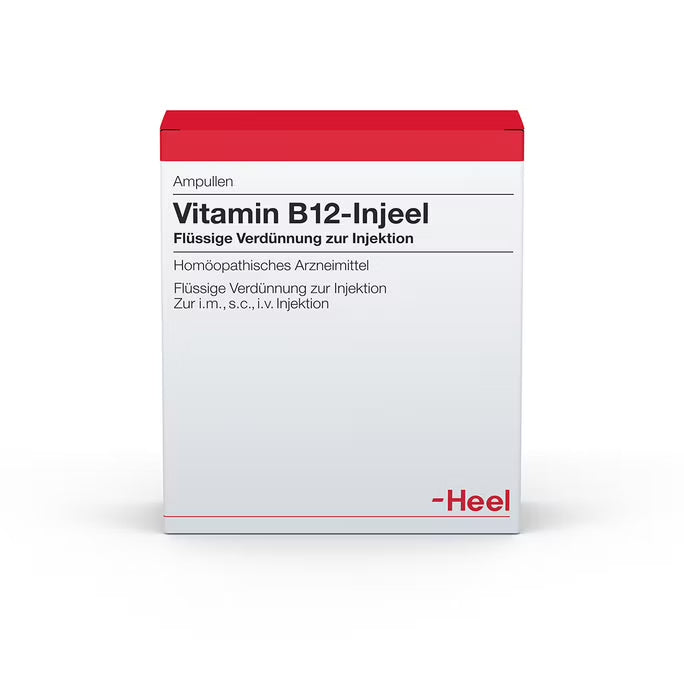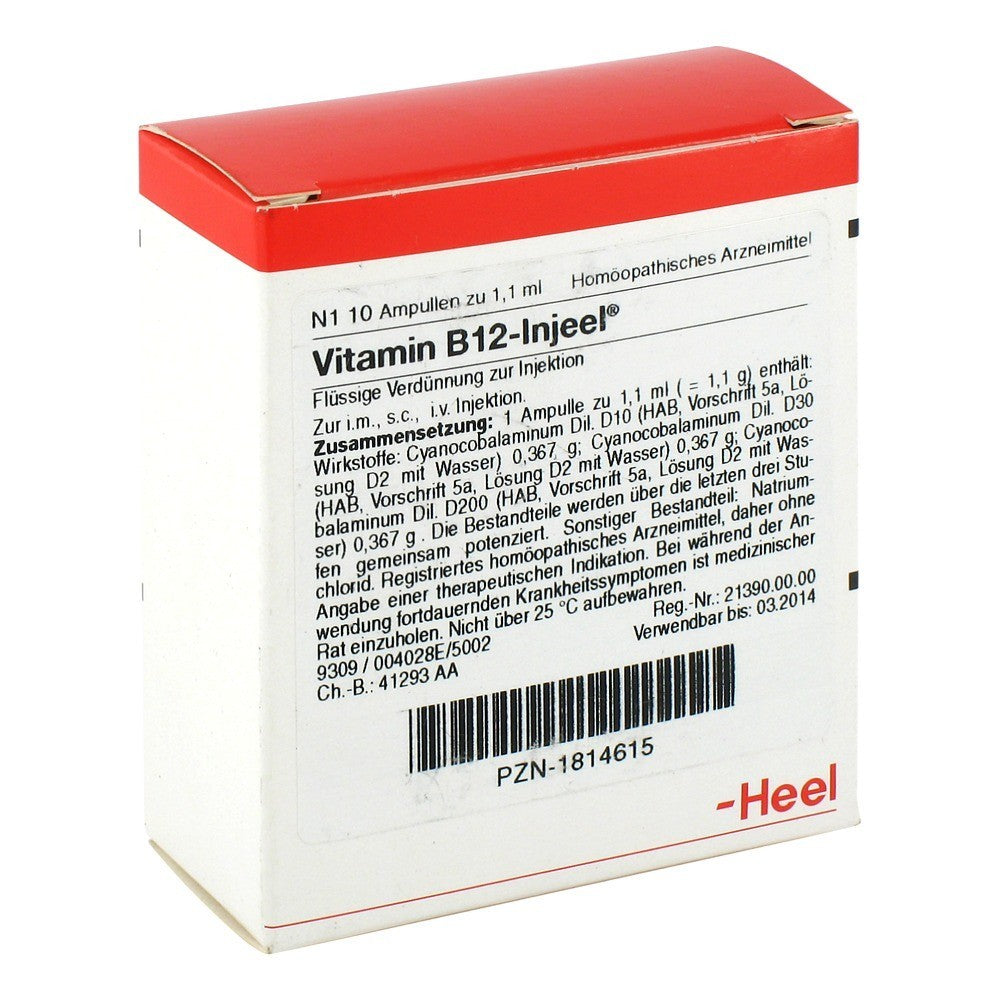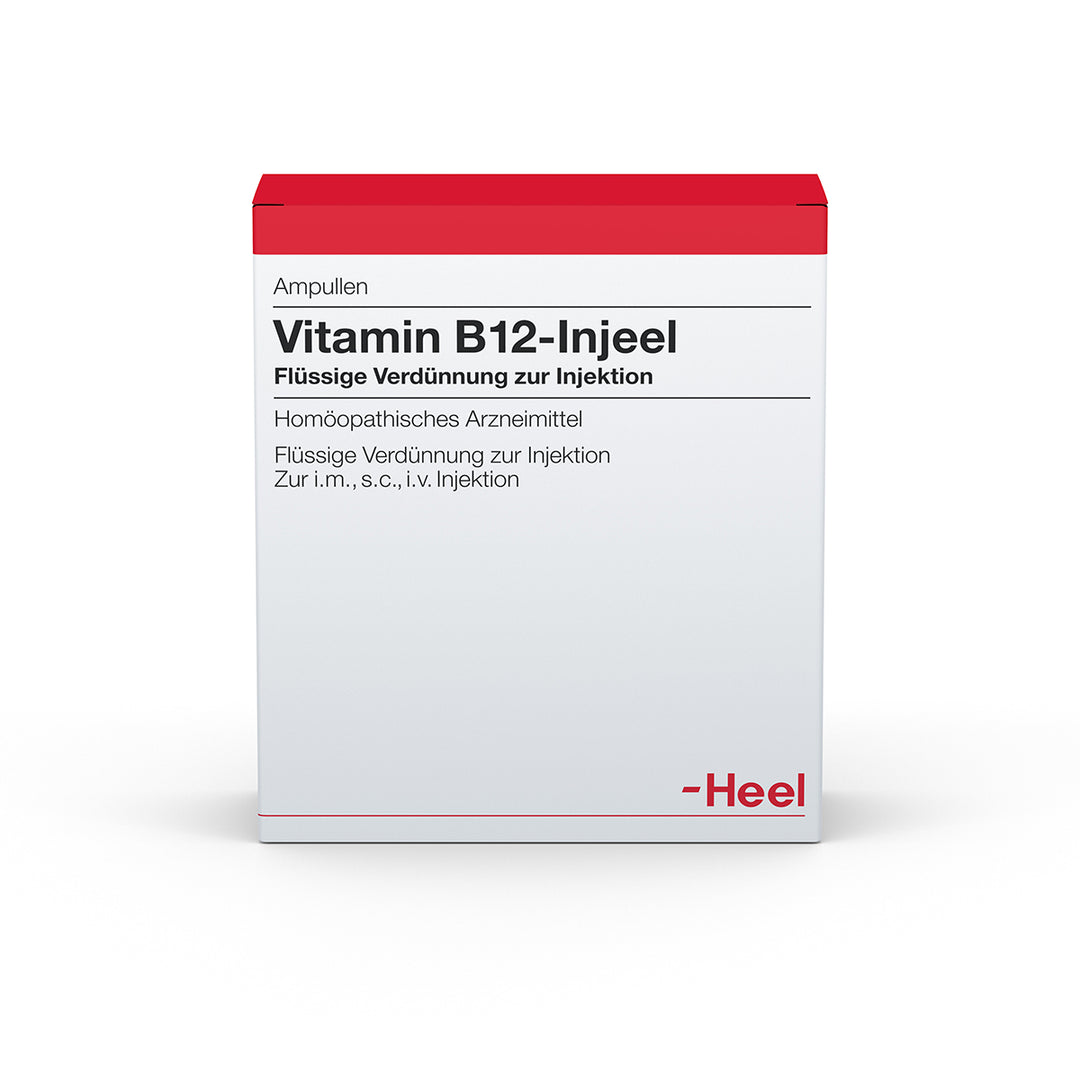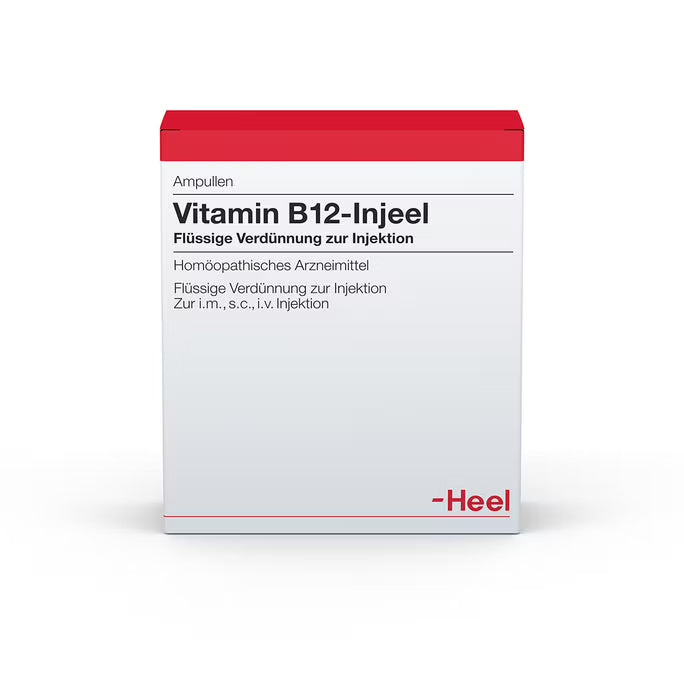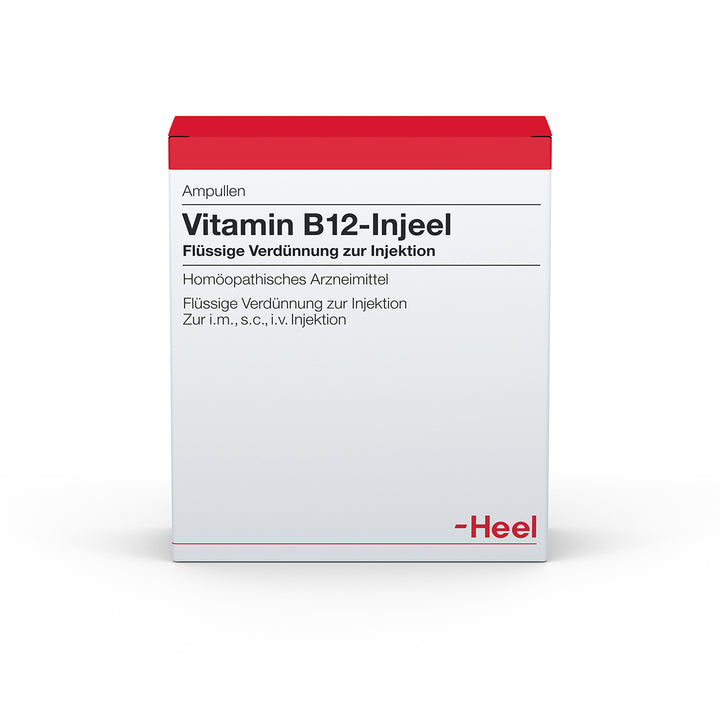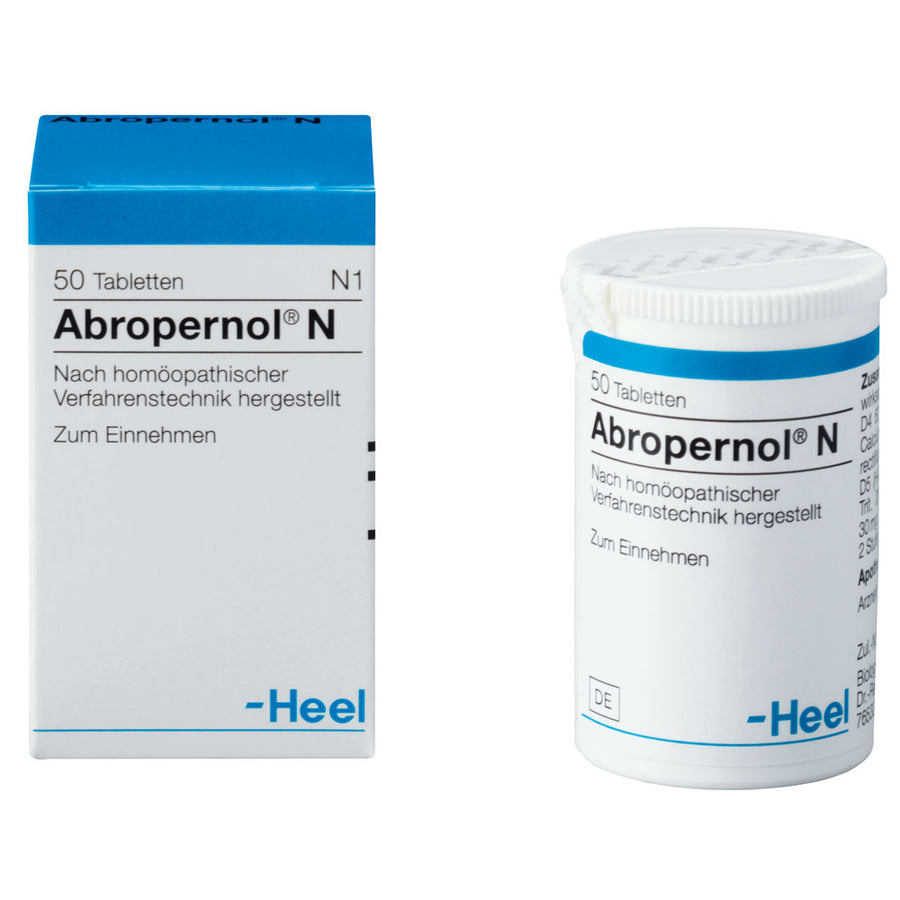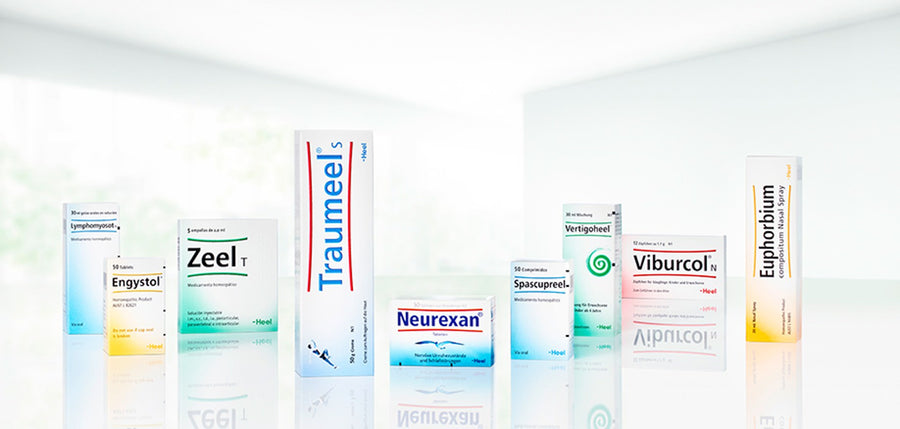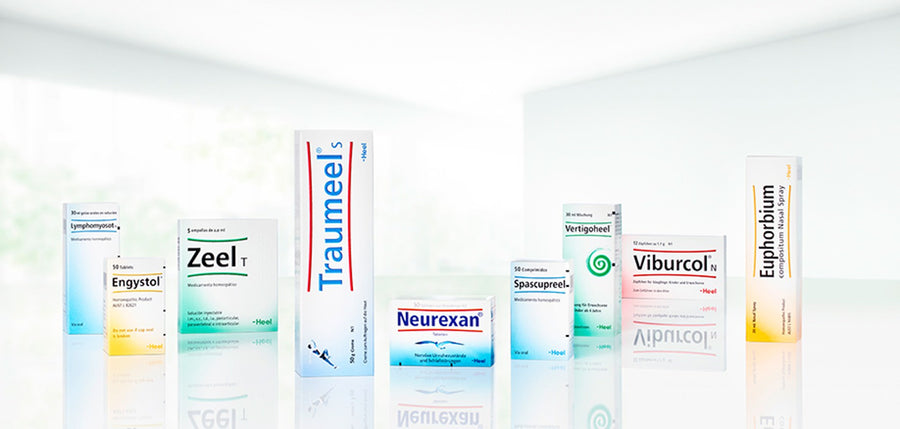Vitamin B12-Injeel
Vitamin B12-Injeel contains 0.367 ml each of potencies D 10, D 30, and D 200. The cobalamins have a ring system similar to porphyrin, with a central trivalent cobalt atom bonding a hexone base in the manner of a nucleotide. Vitamin B12 is an essential factor for normal growth in a wide range of animal species, for uninterrupted haematopoiesis (synthesis of nucleic acid), and for the maturation of epithelial cells, especially in the intestinal tract.
Various observations indicate that vitamin B12 participates in the transfer of labile methyl groups necessary for the formation of methionine, and is associated with folic acid metabolism. Absorption of vitamin B12 in the gastrointestinal tract is already limited in healthy individuals and depends on the concentration of intrinsic factor. A portion of vitamin B12 is absorbed in free form; however, the majority is absorbed after bonding to intrinsic factor—a mucoprotein that binds cobalamins in stoichiometric proportions.
In the liver, vitamin B12, like vitamin B6, supports protein metabolism in the endoplasmic reticulum.
Observations
Clinical-experimental tests were conducted on 50 inpatients with relevant clinical conditions (Senior physician Dr. med. H. Veith: Preliminary report on the possibility of preventing therapeutic damage through the simultaneous administration of homoeopathically adjusted allopathic remedies; Biologische Medizin, Vol. 4, No. 2/1975, pages 271–273; cf. also report in No. 1/1975, page 255), at Dr. Schedel's Clinic in 8391 Kellberg, Scientific Laboratory for Protogerontology.
Injections of 1000 g of vitamin B12 intramuscularly were administered, followed by haematograms and reticulocyte counts. Reticulocytes, as precursors of red blood corpuscles, are known to increase in number after vitamin B12 administration. However, after several injections, desensitization may occur, dulling the body's response and reducing reticulocyte production.
When administered as Vitamin B12-Injeel using the potency chord method (D 10, D 30, D 200), reticulocyte counts increased—most notably after the second and fourth injections. Unlike the first group, repeated injections in this manner did not result in diminished reticulocyte production.
Conclusions from Test Series
- The homoeopathic medicament and homoeopathically adjusted allopathic remedy do not follow the law of mass action but help resensitize the body to substances it naturally contains or receives.
- Such medicaments enhance the body's mode of reaction to the active agent.
- Simultaneous administration of allopathic and homoeopathically adjusted remedies helps maintain the body's detoxification response and prevents desensitization, preserving the therapeutic activity of the medicaments.



